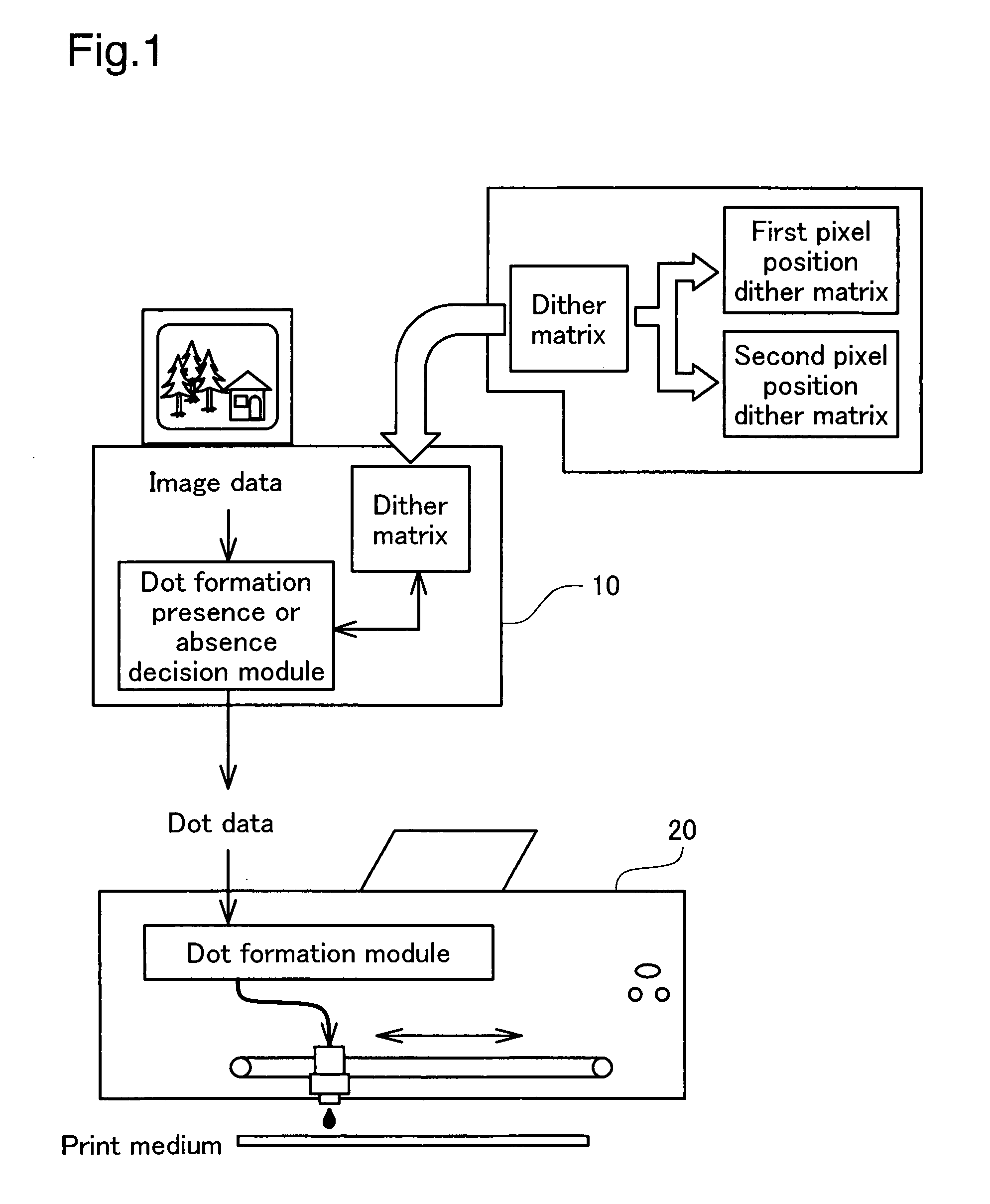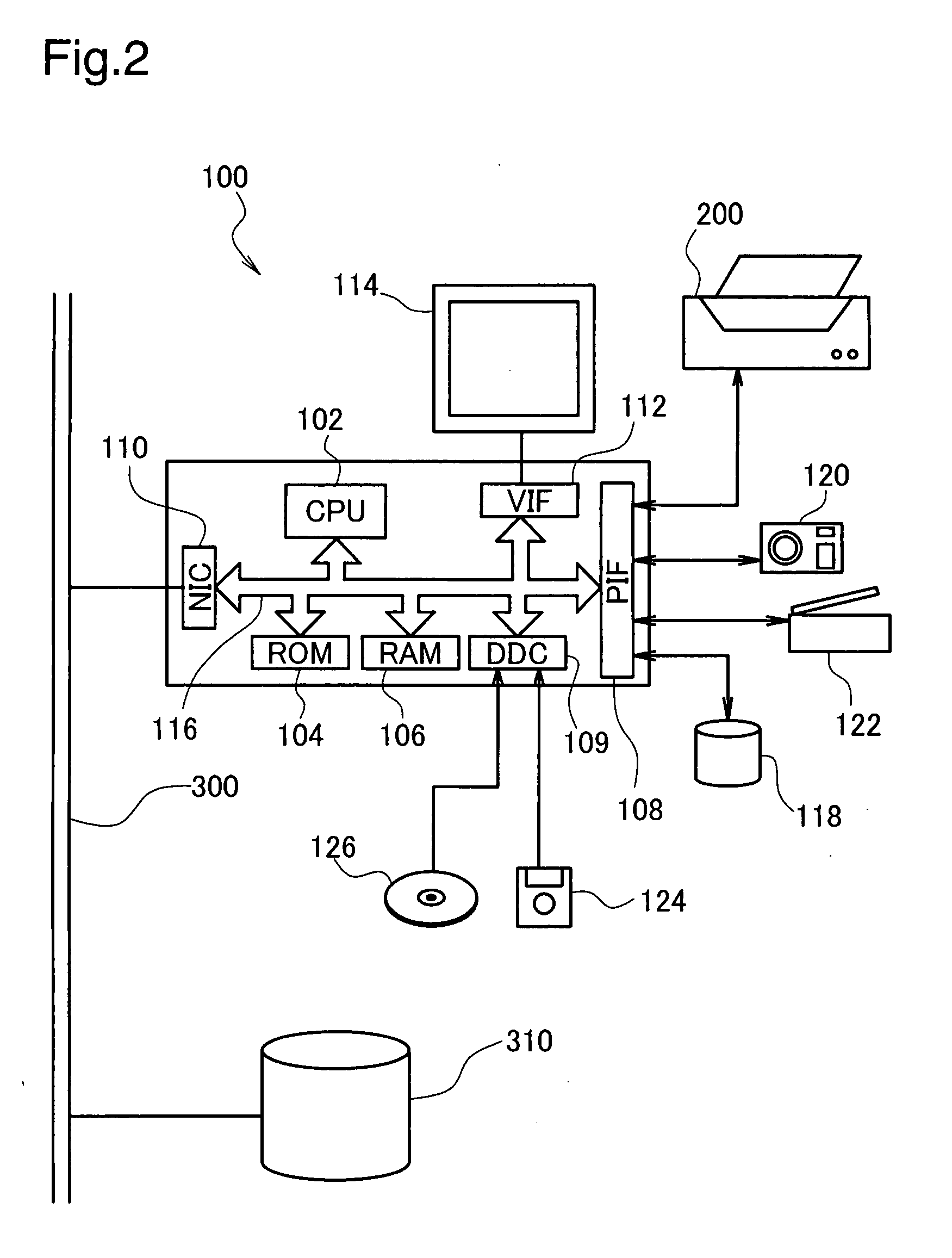Image processing device and printing apparatus for performing bidirectional printing
a technology of image processing device and printing apparatus, which is applied in the direction of power drive mechanism, visual presentation, instruments, etc., can solve the problems of inability to achieve the high picture quality. , to achieve the effect of minimizing the potential effects of bidirectional printing on the picture quality and the variation of the printing environmen
- Summary
- Abstract
- Description
- Claims
- Application Information
AI Technical Summary
Benefits of technology
Problems solved by technology
Method used
Image
Examples
Embodiment Construction
[0045]The present invention is explained in the following sequence based on embodiments.
A. Summary of the Embodiment:
B. Device Constitution:
C. Summary of the Image Printing Process:
[0046]D. Principle of Suppressing Degradation of Image Quality Due to Dot Position misalignment:
E. Dither Matrix Generating Method:
F. Variation Examples:
A. SUMMARY OF THE EMBODIMENTS
[0047]Before starting the detailed description of the embodiment, a summary of the embodiment is described while referring to FIG. 1. FIG. 1 is an explanatory drawing showing a summary of a printing system as the printing apparatus of this embodiment. As shown in the drawing, the printing system consists of a computer 10 as the image processing device, a printer 20 that prints the actual images under the control of the computer 10 and the like, and entire system is unified as one and functions as a printing apparatus.
[0048]A dot formation presence or absence decision module and a dither matrix are provided in the computer 10, ...
PUM
 Login to View More
Login to View More Abstract
Description
Claims
Application Information
 Login to View More
Login to View More - R&D
- Intellectual Property
- Life Sciences
- Materials
- Tech Scout
- Unparalleled Data Quality
- Higher Quality Content
- 60% Fewer Hallucinations
Browse by: Latest US Patents, China's latest patents, Technical Efficacy Thesaurus, Application Domain, Technology Topic, Popular Technical Reports.
© 2025 PatSnap. All rights reserved.Legal|Privacy policy|Modern Slavery Act Transparency Statement|Sitemap|About US| Contact US: help@patsnap.com



